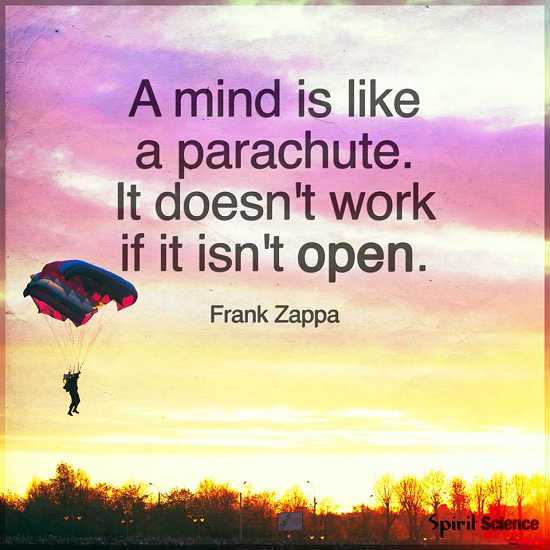I offer a simple visual framing, to reduce your anxiety about the abundance of choice in the exponentially evolving tech world.
One of the biggest frustrations of modern software development, whether the topic is websites or various types of apps is figuring out which technologies to bet on, not just for the present, but also for the future. What if you make the wrong decision about learning something new — or sticking with what you know?
Wait, how does this relate to parachuting?
You’ve probably seen or heard a phrase similar to this before (it comes in many versions): a mind is like a parachute, if it’s not open, it doesn’t work.

If a parachute is just open enough it will safely transport you where you want to go. If, however, it’s either too closed or too open, you’ll crash to the ground.
The same principle applies when it comes to expanding your mind vs. applying your existing knowledge in your field of work — or life in general.
You should always be open to learning new things because if you don’t you’ll eventually fall off the wagon and find yourself stuck with some old archaic skill-set that is in-efficient compared to modern alternatives.
Nobody wants to pay for in-efficiency, and even if you’re only using the skill for yourself, why continue using an approach to solve a problem that takes way more time than newer methods? After all, time is the most valuable resource you have.
Don’t be overly stubborn about using languages or frameworks that the statistics strongly suggest won’t have a community in a couple of years. A small community is not a bad thing, but if you’re the only one in it, you can’t leverage the power of collective knowledge that exists in any larger and evolving community.
That said, you should still be conservative about how you spend your time and your mental resources because whenever you decide to spent time somewhere new, you’re taking time away from somewhere else.
Acute knowledge vs. learning as you go
People do best what they do most. If you already have a set of tools in your skill-stack that compliments each other and makes you productive enough to build complete products, e.g. a WordPress or a Gatsby blog — treasure those skills, as they are powerful and valuable.
Stay curious, but be careful about introducing too many new things at once. It quickly gets overwhelming and often induces anxiety.
New technologies are exciting but they have a learning curve attached, and the more time you’ll have to spend on learning new things (enough to be productive), the less time you have to use the skills you already have.
Stay conservative with how you spend your time, but keep your mind open and observe changes in the technological landscape so you don’t miss out on important game-changers.
I try applying the 80/20 principle to how I spend my time. 80% is spent using, and sharpening my existing skills. 20% is spent exploring new technologies.
It doesn’t have to be exactly 80/20, it could also be 90/10 or 75/25. It’s just a rule of thumb, that helps you to stay on a directionally productive path.
With this approach, you’re never out of the loop when it comes to the advancement of technology, but you can still be productive most of the time by applying the skills you already have in your tool belt to build great products.